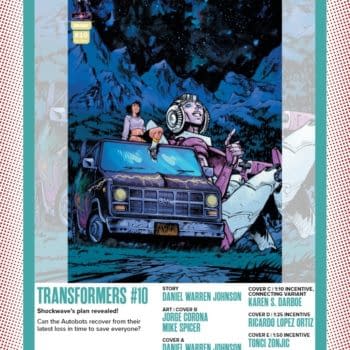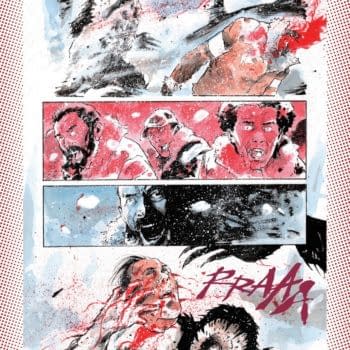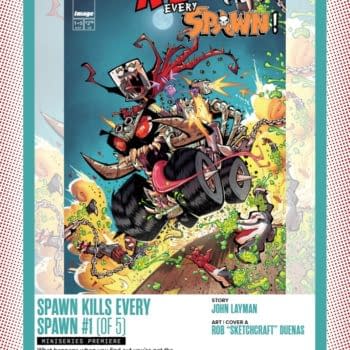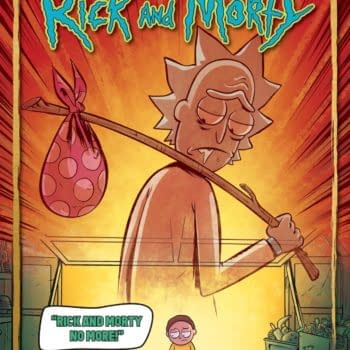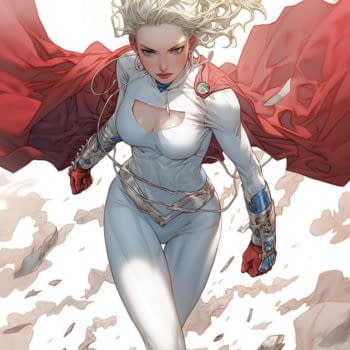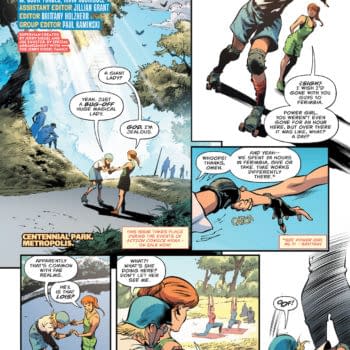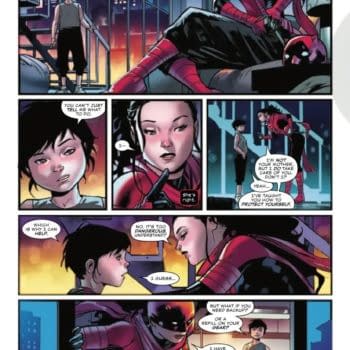Posted in: Comics | Tagged:
Greg Baldino On Black Comix – Part One
"It used to be that the comics industry would say blacks didn't read comics. False! Then they would say a black character cannot be profitable. False! Then they'd claim that a black products created by blacks cannot be profitable. False! They even claim there is no black age of comics. False!"
-Turtel Onli, The Black Age of Comics

John Jennings: We have been working on comics and underrepresentation in some fashion for the last five years. The book came about from a collection of several large scale art exhibits centered around representation and comics. It is the culmination of those endeavors in a physical document.
Damian Duffy: A lot of our work focuses on issues concerned with race, identity, and opening up perceptions about what the comics medium is capable of. The four art shows we've curated have been about race and identity in comics in one form or another: "Other Heroes," "Out of Sequence," "Souls of Black Manga," and "Beyond the Frame." We would meet many a talented artist that not a lot of people know about, and we sort of went on a bender, putting together all these exhibitions of people we thought could do with more attention, especially people that seem underrepresented in more mainstream views of comics

Damian Duffy: Our biggest art show, "Out of Sequence: Underrepresented Voices in American Comics," started out as a reaction to the "Masters of American Comics" exhibition. [It had] built up an old school canon, complete with the old school practice of featuring all guys and mainly white guys at that. (George Herriman was possibly black, or at least of mixed-racial heritage.) And, what's more, it was such a narrow view of the panorama of comics. We wanted something more interesting. Not to argue that comics was a hallowed and petrified Fine Art, but a vibrant, various, and evolving medium capable of expressing all kinds of stories, voices, cultures.
So we decided to think of "underrepresented" not just in terms of demographics (race, gender, sexual orientation, etc.) but also in terms of form (abstract comics, gallery comics, self-published, webcomics, virtual reality comics, etc.). So that's a strand that we're always trying to weave in, the mix of genres, of styles and forms. John and I are both big hip-hop heads, and we really like bringing the idea of the re-mix into comics.
The book is a full-on immersion in the Venn diagram overlap between comic culture and black art. In addition to page after page of vivid and unique art, the book also features numerous essays and interviews, discussing the world of the overlap. The secret origin of the East Coast Black Age of Comics Convention get revealed in an interview with the founder and president Yumy Odom. Creator Dawud Anyabwile writes about creating the successful independent superhero Brotherman: Dictator of Discipline. William H. Foster III, a Professor of English and Communication, offers a critical examination of black comix from a scholarly perspective. The book opens up not only the possibilities of comics, but of contemporary black arts as well.
John Jennings: One of the things we wanted to explore is "what is a black expression"? Because of the nature of stereotypes and representation,we thought it was important to showcase the fact that a "black expression" is just as diverse as any other and just as professional, exciting, and powerful. We also wanted to show, as we
have with our exhibits, that the comics medium persists no matter what form you present it. It's an immediate mode of storytelling that is finally coming into its own. So, the book was put together to celebrate the creativity of the artists but also to highlight how comics can be used for a vast array of personal expressions.
Damian Duffy: When you're talking about art and culture, the boundaries should be fuzzy. There needs to be space for many different people to move through and between different art worlds. There's a quote from the cartoonist Ollie Harrington that I always like to use (and indeed I used it in the book) where he talks about: "… certain time-proven laws which indicate when human beings of many different cultures and experiences are joined together in one society, the result is a more creative and productive society." I like that idea, the idea of solidarity, of accepting difference but being open to understanding. All of which is to say, while the book is called Black Comix, it's not about making an all-encompassing statement, that this one thing is the definitive statement of African American comics culture. It's about making space for celebrating the diversity of this particular subculture while maintaining the understanding that there is no cultural vacuum, that this is just one strand of attention within comics, within American culture and art.
Shining a spotlight into the margins of culture, Black Comix is an exaltation of the incredible work of contemporary African-American artists working in comics today, and a refutation of the notion that black comics could ever be narrowed down to a simple definition.
Black Comix: African American Independent Comics Art and Culture, by Damian Duffy and John Jennings, is published by Mark Batty Publisher.
Greg Baldino lives and writes in Chicago, where he watches over the local comics scene like a posthuman autocrat. His fiction and journalism has appeared in many publications internationally. He can be contacted at greg.baldino@gmail.com.







